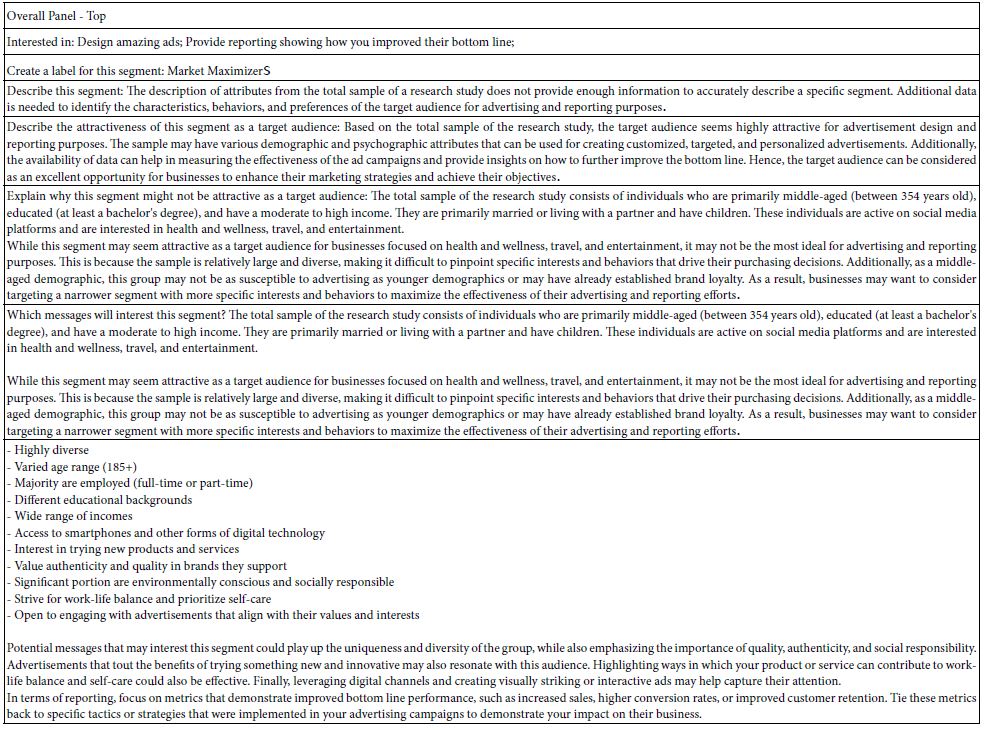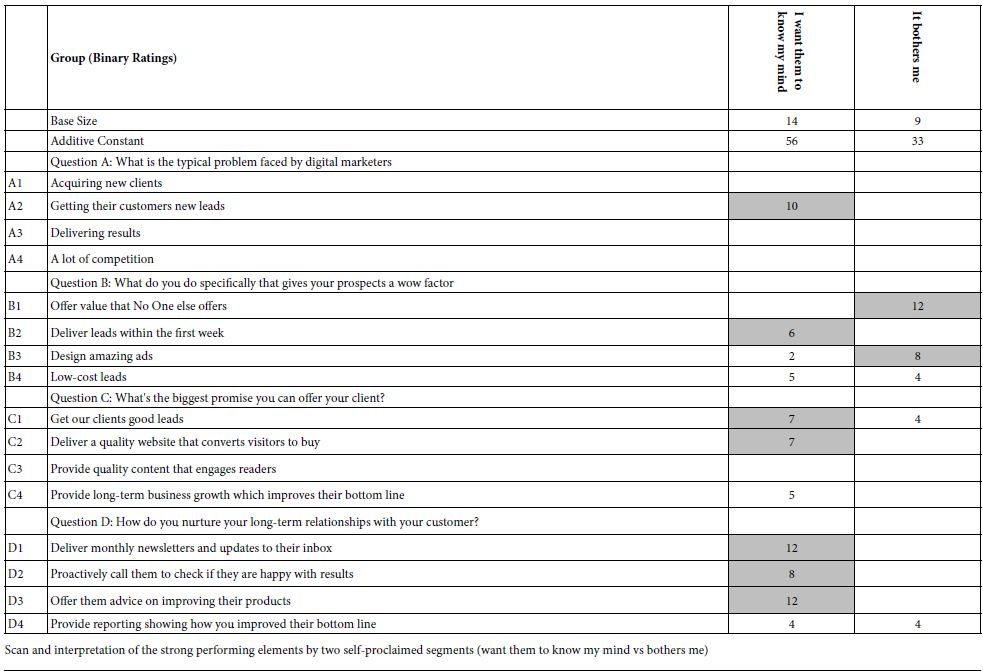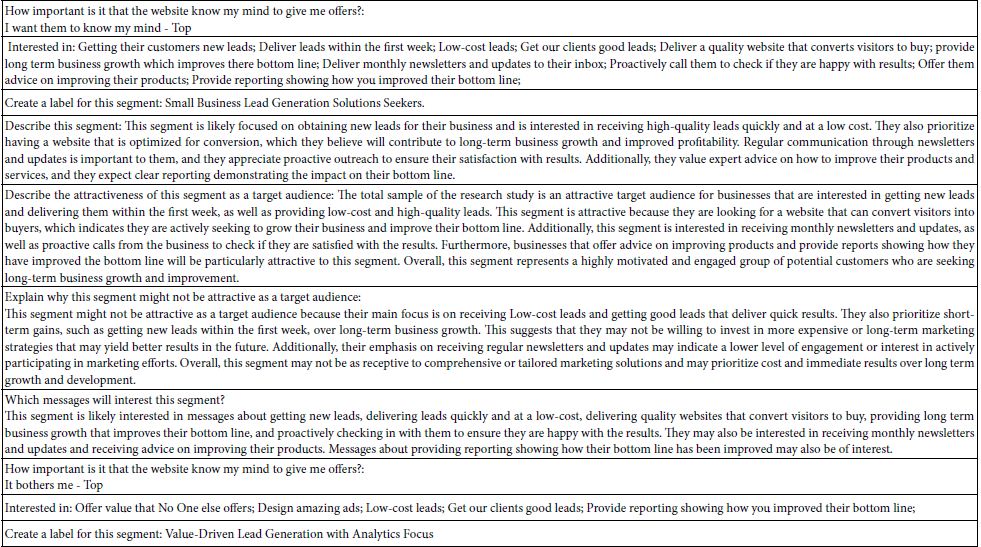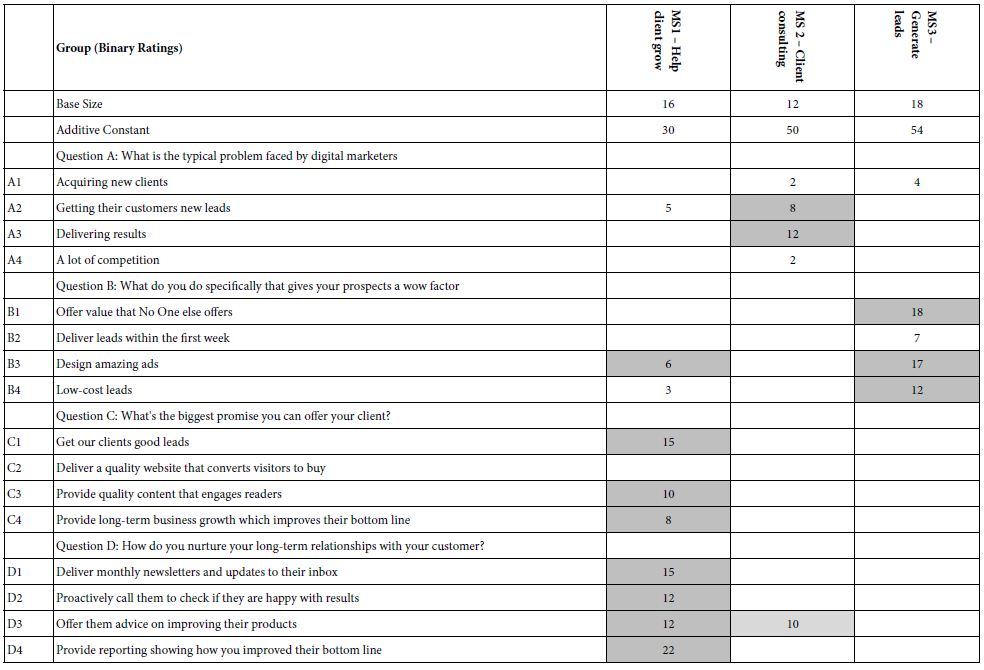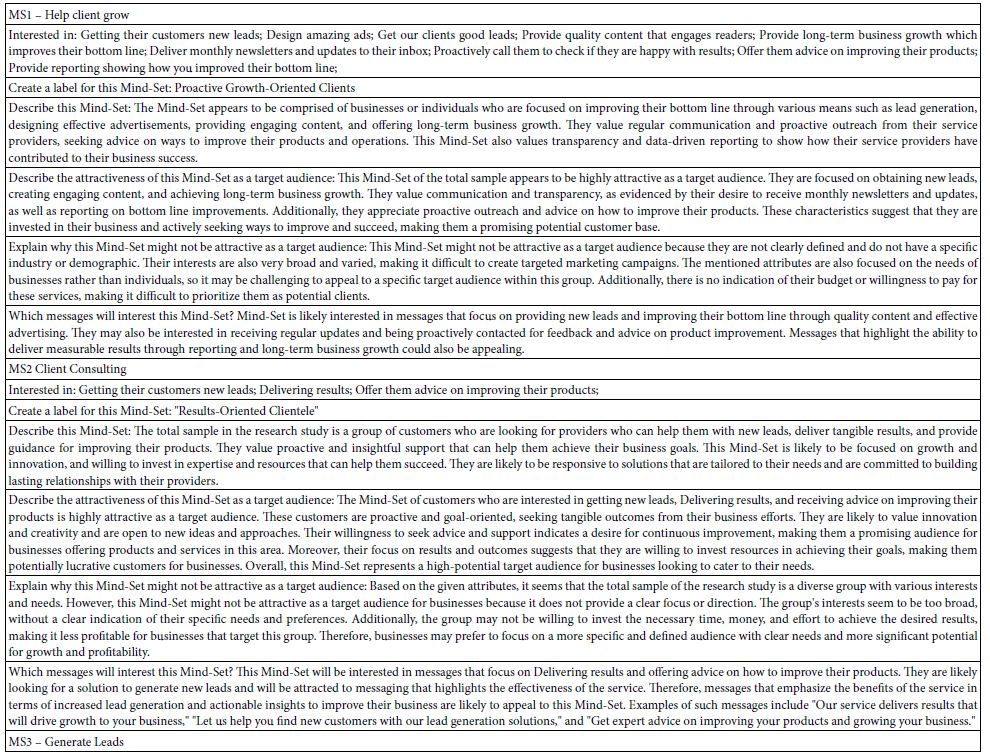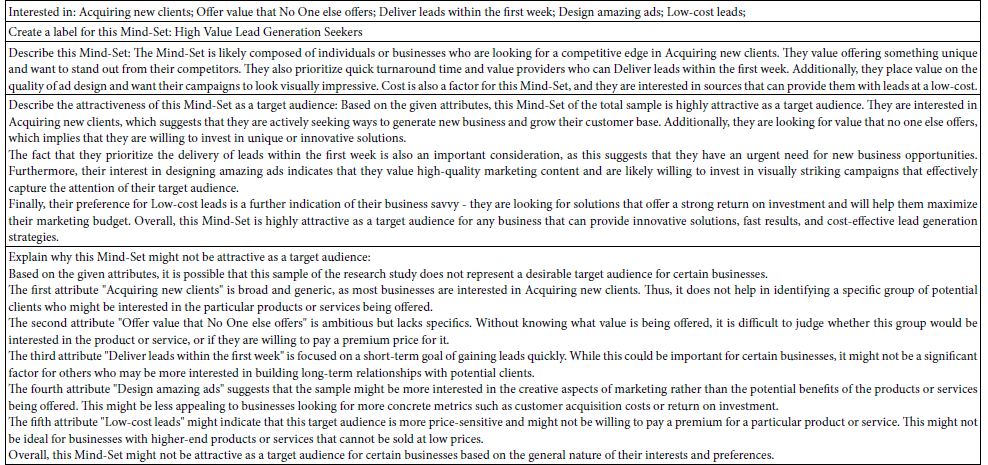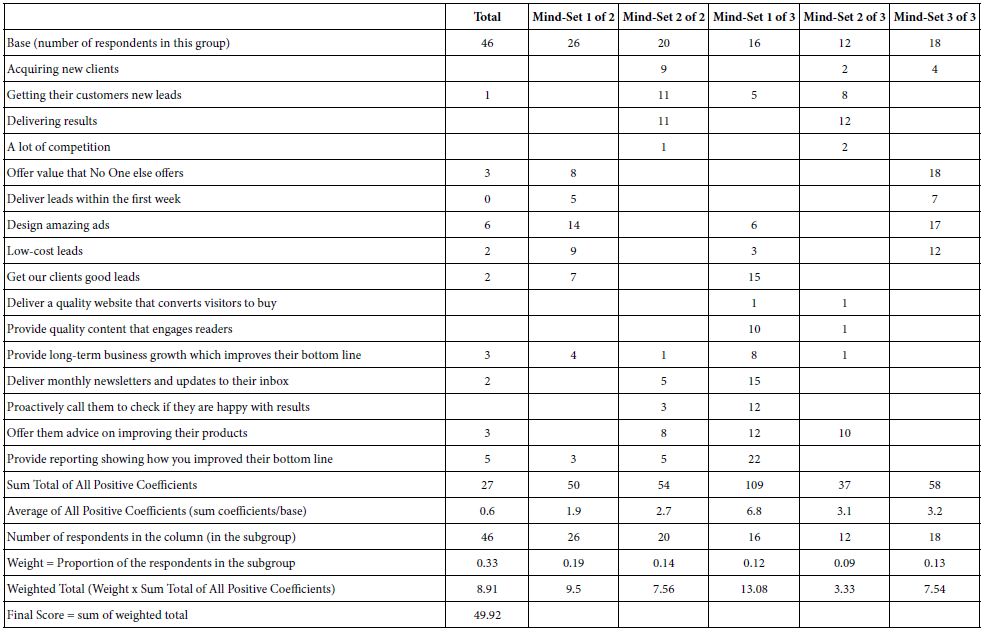DOI: 10.31038/PSYJ.2023552
Abstract
Russia’s war on Ukraine is not a failure by accident but reflects mentality and stance of the Kremlin and greater parts of the Russian people. Russia’s domestic policy is characterized by autocracy and his international politics follows imperial dreams, prosecuted by most brutal methods. Obviously, the political consciousness of the Russians has not progressed to the rates and standards that shape mind and behavior both of politicians and electorate in the most advanced nations of our time. It is argued that political sciences must consider research conducted by the cognitive-developmental approach to understand divergent political cultures more thoroughly. Contemporary nations operate on differently developed stages of mind and cognition with far-reaching effects on moral reasoning, social understanding, and humanitarian standards. There is evidence that a weaker development of the fourth stage of human cognition, the stage of formal operations, accounts to backwardness concerning the process of civilization. This seems to be the main cause to the existence of the chasm between the “Russian World” and the “Free World”.
Keywords
Developmental stages, Civilization process, Political consciousness, International politics, Democracy, Autocracy, Moral values, Humanism
Introduction
Since February 2022, social scientists, politicians, journalists, and the public have been more and more realizing that the differences between Russia on the one side and Western nations on the other side concerning culture, politics, and mentality are much greater than previously assumed. Even a few weeks before the war, only a small number of the 2.000 experts visiting the Munich Security Conference expected Russia was to attack Ukraine, while the majority assumed Russia would only try to blackmail the West and Ukraine for receiving some guarantees and concessions. Many Western observers previously believed that the Russian Federation would share common norms and standards concerning international treaties, territorial integrity, warfare, and humanism at least to that rate to be hindered from starting a brutal war against a nation to whom it had maintained a lot of connections in terms of language, culture, and family ties. Though many experts and observers still continued in preserving their naïve illusions even during the whole year 2022, some others recognized that the war might evidence the huge cultural gulf between Russia and the West, a cultural chasm which has existed for generations and centuries but was overlooked for long. The war threw a new light on how to understand Russia, its society, culture, politics, and people, both the past and the contemporary Russia.
In fact, the tremendous differences are manifest concerning domestic and international politics, economy and judiciary, culture and mass media, family life and morals. They seem to touch every aspect of life, refuting the assumption that the use of modern media, rise of higher education, international contacts, and participation in globalization might prompt and unify the standards of politics and morals on a worldwide scale, at least with reference to the comparison between Russia and the West. It is obvious now that Russia has not shared the advancements in political culture, morals, and humanism to that rate the Western nations, including for example Japan and South Korea, have accomplished over the past generations. Russia has not successfully progressed to heights which are identifiable in the most advanced nations of our time.
Many experts may agree on the existence of this cultural chasm as outlined in the previous sentences [1,2]. However, the cultural gap may be much deeper than most critics of contemporary Russia even believe. I am going to maintain that the cultural gap is describable in terms of developmental stages as they are known and worked out by professional developmental psychology. This kind of research and theory is almost unknown among most political scientists, historians, sociologists, journalists, and politicians. Even the harshest critics of Russia, seeing it as backbencher concerning modernization and progress, understanding it as Stalinist or partially even as medieval, usually have no idea of possibility and necessity to apply developmental psychology to scrutinize Russia specifically and cultural differences between nations generally.
In several essays, E. Fein and A. Wagner have described Russian politics in terms of psychological stage theory, using theories of adult development [3,4]. Adult development describes stage developments unfolding and discernible among adults within a given society or between adults of different societies. This approach illuminates the backwardness of contemporary Russia in a fresh and astonishing way, dwarfing the common political science studies related to Russia by showing their limited precision and their insufficient or almost missing explanatory power.
This article goes beyond that as it erases the boundaries between developmental psychology and adult development theories. Theories of adult development actually do not bridge the gap to child development; it remains unclear how adult development follows those stages children go through. More precisely, theories of adult development sometimes describe about ten stages, maintaining there are some adults in modern societies operating on stages two or three of ten possible ones [5,6]. Then they have the problem to connect these assumptions with the fact that there are prior stages to consider, those provided for children and teenagers. When modern adults might stay on stage three of ten possible ones, where did they stay when they were six or 14 years of age?
Therefore, my own approach solely bases on the most common stage theory known in developmental psychology, on the theory of stage development according to Jean Piaget. It describes four main stages, covering the development from neonate over child and adolescent to adult phases [7]. My approach, called structural-genetic theory programme, is developed as a general theory of history, and expounds the history of human development from archaic to modern societies, including the history of culture, politics, law, religion, sciences, philosophy, arts, and morals (XXX).
Archaic or ancient humans share with modern children stage two and sometimes stage three but do not develop stage four, which is a stage that only adolescents and adults of modern societies are able to develop. The evolution of stage four – the stage of formal operations – originated late in history, usually in Europe during the 17th and 18th centuries, and did not reach the average people before the 20th century. Stage four has evolved stepwise from generation to generation over the past centuries. Stage four has continually grown within the most advanced nations of today, while developing and threshold countries are somewhat behind concerning that development. While the most advanced nations of today stay comparably highest on formal operations, people of threshold countries are more or less somewhat behind, while people living in traditional regions within the developing nations often do not attain the fourth stage at all. These uneven stage developments across world society account for uneven developments of politics, morals, and humanism (XXX).
The structural-genetic theory programme refers for example autocracy, missing human rights, corruption and criminality, maltreatment of women and children, brutal punishment laws, and superstition to lack or weak development of the fourth stage, while a strong development of that stage reversely accounts for democracy, protection of civil rights, humanism, rationality and enlightenment (XXX). Therefore, it is claimed that the comparably cultural backwardness of current Russia must be explained in terms of developmental psychology, that is, it is rooted in comparably weaker developments of the fourth stage in the minds of people.
On the whole, Piagetian stage theory delivers a sharper and deeper foundation to the phenomena mentioned than adult development theories, with foundations that are much more precisely and more consistently based. There is no gap between child and adult development, but adult development is continuously connected to child development. Sciences need only one stage theory, not two of them.
Civilization Theory and Piagetian Psychology
There has been a forerunner of the structural-genetic theory programme. The civilization theory of Norbert Elias [8] shares many assumptions, including the description according to that humankind went through psychogenetic stages from childhood to adulthood. Elias compares ancient or medieval adults to children, seeing adults of modern societies as the only ones to have surmounted children’s stages. He describes medieval humans as people characterized by narrowness of mind, inability to overlook complex relations, cognitive egocentrism, low thresholds of shame and embarrassment, low forms of conscience, strong and wild passions especially concerning sexuality and aggression. According to Elias they have a strong Id and a weak Super-Ego, allowing the I to follow his drives and passions. Modern adults have overcome the child’s psyche and are therefore more civilized. The history of civilization, the transition from medieval to modern times, roots in this psychogenetic development of humankind. Elias recognized that non-European nations have been following this path during the 20th century. According to that theory, Russians can be categorized as backbenchers concerning the civilization process.
Piagetian theory and Piagetian Cross-Cultural Psychology can evidence that what Elias had already described, thereby using better data and theoretical models than Elias had had available. All humans all over the world develop the sensorimotor and the preoperational stages likewise, but then divergences between ethnicities appear. The preoperational stage is the modal stage of archaic or premodern adults, the stage that explains archaic mind, behavior, and culture mainly. Some of them develop also the concrete operational stage, mainly partially and mostly bound to certain issues and tasks. They never develop the formal operational stage, the fourth and final stage [9-14].
The preoperational stage matches to children between their second and their tenth year roughly, and the concrete operational stage covers developments between the sixth and the 12th year of age. The formal operational stage stepwise unfolds between the 12th and the 25th year of age. That implies that archaic or premodern humans usually stay on stages of children between their third and their tenth year, most often between their fourth and their seventh year. Archaic humans may differ in life experience and knowledge from preschool children, but not regarding their psychological stage structures. More, every single phenomenon developmental psychology found to describe children, empirical research also discovered as main feature of archaic adults. The commonalities regarding stage structures are encompassing and complete, leaving no room for any differences whichever. Modern adults, however, distribute on developmental ages between 10 and 25. While some modern adults stay on substage A of formal operations (10-15 years of age), others exhibit substage B (from 15 years onwards) (XXX).
Children and archaic adults share the same patterns concerning numbers, logic, physics, social affairs, political understanding, morals, religious phenomena, and worldview, right across the whole range of mind, consciousness, and world understanding. Both groups likewise believe in ghosts and sorcerers, magic and oracles, and share animistic understandings of nature and movements. Both groups hold on a law-and-order justice and discern laws as holy and unchangeable things. Both groups have religious feelings towards natural phenomena and view the cosmos as some kind of God by itself. Both groups have the same attitudes towards myths and fairy tales and apply the same categories of causality, chance, and probability. Both groups support autocracy and deny democracy. The commonalities include even small details such as the understanding of shadows or the ignorance of syllogisms.
Against this background is it possible to reconstruct the history of culture, sciences, philosophy, religion, politics, law, morals, and arts in terms of developmental stages [15-18]. The preoperational stage carries and defines the historically early stages of these branches of culture, no matter where and when in world history, and the higher stages carry their trajectories through later times. The modern structures of these branches mentioned are mainly nothing else than manifestations of the formal operational stage. On the whole, modern, industrial society simply is a manifestation of the fourth stage. As stage theory is the deepest description of the psychogenesis of humankind, as the structural-genetic theory programme delivers the most fundamental description of the history of the branches because it directly refers this description to the core structures of the four stages respectively (XXX).
Developmental Psychology and Political Studies
Stage Theory and Political Behavior in World Politics
Psychological stages have widely shaped the evolution of political institutions and political thought [19,20]. They do not only account for the existence of autocracy or democracy but also for the rate of brutality and criminality concerning political behavior, or for the values and moral standards shaping political conduct. Politicians governing developing nations have been tending more to brutal and criminal behavior than politicians ruling the most advanced nations of our time. Not political institutions and legal frameworks account for that difference, as most political studies suggest or imply. Psychological stages cause these differences as they cause both institutions and mentality of people. Nations operating on lower stages have no problems in accepting violent rulers, they are loyal to dictators and tolerate their insane methods. Only nations on higher stages rebuke both autocracy and violent and absurd methods of politicians. Political sciences, however, don’t know about the necessity to apply developmental psychology to the study of political phenomena. I have yet published some book chapters and some articles to outline the link between political sciences and stage theory.
For example, the former president of the Philippines, Rodrigo Duterte, won elections for presidency due to his official statements he, as mayor of Davao, had killed drug-users and dealers by his own gun on regular controls he had done through his city with his motorbike. He won the election campaign because the nation wanted to have a strong man capable to solve problems by most brutal methods. Then staying in power, hundreds of private persons and police officers alike received 300 USD for every assassination of both addicts and dealers. More than 10.000 persons were killed anywhere in the streets or in their homes, without any supervision or judicial procedures. More, the Philippines had no special drug problem though, at least less than many other nations (XXX). It is apparent that such phenomena could never happen in the most advanced nations of today, and even not in advanced developing nations such as Brazil or Argentina.
Prince Johnson murdered Liberia’s president Samuel Doe in September 1990 and made a detailed two-hours-film of the slow and brutal torture and killing of Doe. The video became the biggest attraction in Liberia and was widely cast in West Africa over years. It did not endanger Johnson’s presidency but ran in bars and shops from morning to night, entertaining the appetite and appealing the taste of some nations at best (XXX). Again, such things could never happen in Brazil or Argentina. It is impossible to imagine Angela Merkel sitting on a motorbike hunting addicts with her own gun or even Donald Trump casting videos showing a torture of “sleepy Joe”.
Even people with most limited knowledge of developmental psychology should immediately grasp that only stage theory can explain these great differences in political behavior. There are huge differences with this regard between contemporary nations whether political sciences and journalism can address or envisage this or not. These pieces of information are the best precondition to understand the necessity to apply stage theory to political studies, to the ignorance of our intellectual and political elite, and – to Russia.
Stage Theory as Explanatory Model to the Evolution of Democracy
Developmental psychology does not only explain daily political behavior and political mentality. It explains also whether a nation prefers autocracy or democracy. The structural-genetic theory programme has outlined that not social structures or power constellations account for autocracy/democracy but stage developments concerning a nation’s political consciousness (XXX). Jean Piaget delivered the decisive data to develop this new theory of political systems. He evidenced that children by their tenth year roughly see rules and laws as unchangeable and holy, made by God or the elderly. They think people are not allowed to make rules and to govern society on their own, by applying democratic customs and procedures. Teenagers, however, surmount this idea of divine and autocratic government, and establish ideas and customs of democratic leadership. Accordingly, stage theory accounts for the existence both of autocracy and democracy [21]. Subsequent research has repeatedly confirmed Piaget’s early study. Teenagers have a better understanding of liberty rights, tolerance of dissident opinions, and democratic procedures, while children focus on the privileges of rulers and hold on strict principles of obedience [22-30].
Not before 2013 did an encompassing study with about 100 pages exist to evidence that humankind went through exactly the same stages of political systems and ideas as those outlined by developmental psychology, as those found among children. It is now sufficiently and coherently worked out that stage theory is able explaining the rise of democracy (XXX). The gradual rise of formal operations during the time 1750 to 1950 is the main cause to the continuous rise of liberty rights, rule of law, and democracy, first in the West, later on in other regions of the world. The era of Enlightenment worked out the ideas of liberalism, while the era of revolution at the end of the 18th century and the era of modernization during the following centuries put the liberal ideas into praxis and created the institutions of democracy. The emergence of the stage of formal operations has carried the whole process of civilization manifest in political systems, political consciousness, moral standards in political behavior, and political values. The decline of violence, corruption, mafia connections, and warfare mentality is consequence of psychogenetic advancements. This late description or discovery is insofar astonishing as Piaget himself in his early study launched a lot of remarks that there are parallels to history, while for example decades later Radding also made some formulations related, being by no means the only author with this regard. However, it was the structural-genetic theory programme to develop the new theory consistently and fundamentally (XXX).
The Political System in Russia
Russia transformed from monarchy to communist dictatorship in 1917. Democracy existed in Russia only during the last decade of the last century, while since 1999 with Putin in power Russia slowly turned into autocracy again, holding democratic institutions only as a mere façade. Already in the year 2000, the new government overtook greater parts of mass media in order to control public opinion in favor of the Kremlin. By 2008, the Kremlin is said to control 90% of mass media. The new government put former KGB agents into central positions of state and administration with clear intention that the secret service should dominate the whole state and society. In fact, with Putin the former KGB overtook the power in Russia and removed both the new democratic elites and the Jelzin “family” from influential positions. By 2006, 78% of the Russian state elite had a background with the “services”. From the scratch on these people aimed at abolishment of liberalism, democracy, and rule of law. Liberty rights were contained and there was nobody anymore to enjoy legal protection against prosecution or attacks by agents or officials. The division of jurisprudence, legislation, and government slowly dissolved [31].
The new power elite overtook the economic empires made by the Oligarchs of the 1990s and thousands of enterprises, thus dominating whole branches, media, energy, building, finances, etc. They forced former entrepreneurs to resign and to hand over their property, or just killed them, when they refused to give in. It was just brutal force that made the grand robbery feasible. Or, they used justice and police to accuse any businessmen to get their property into their hands. Especially the accusation of not having paid taxes offered a good pretext for expropriation.
It was common that true Mafia organizations killed entrepreneurs, overtook their property, and shared their conquest with either local state officials or even with the Kremlin. Or, that state officials overtook enterprises, thereby using the help of Mafiosi. Coalitions with Kremlin, administration, police, and Mafia became widespread. Robbery, basing on such coalitions, did not only concern enterprises but entailed also private houses or appartements. Violence decided over business success and ownerships referring to enterprises and houses.
The Kremlin dominates at the top of the corrupt system. When gangsters or service agents want see their robbery secured or even guaranteed, then they must share with the Kremlin. The Kremlin receives this way its shares from all parts of economy throughout the country. Secret services or the Kremlin now control 70% of Russia’s Gross Domestic Product. Russia is practically a feudal state where the Kremlin approves ownerships in exchange of shares or contributions. Thereby it is possible that in case of missing loyalty or missing shares, the Kremlin expropriates owners to overtake the property by its own, or by consigning it to other persons or groups. The Kremlin allows or withdraws ownerships from any conglomerates, enterprises, or businessmen for whichever reasons. It is maintained that there does not take place any transfer of capital over 50 Mio. USD in Russia without the personal permission of Putin himself. Therefore, he could accumulate more than 200 Billon USD for his own fortune and build his own “Versailles” close to Sochi.
The slow transformation from democracy to autocracy accelerated since the invasion of February the 24th. Since that time every trace of opposition has vanished, and strict loyalty and obedience is requested from any citizen in the state. The question arises why did the Russian people accepted that transformation? Why did they allow gangsters to overtake office and economy? Why did they endure their slavery and loss of rights? According to the new theory of political systems presented above the ultimate cause to the existence of autocracy is the weak development of the adolescent stage of formal operations. Dictators can only rule when greater parts of a nation support them, accept them and are loyal to them. Without support and wish of the people dictators cannot keep their power and rulership. The existence of autocracies depends on the political consciousness of greater parts of the nation. In fact, psychological stages account for dictatorship.
Without knowledge of the structural-genetic theory programme, authors studying Russia have recognized that the majority of Russians already in the beginning of Putin’s rulership were in favor of autocracy and saw it as the best method to rule the country, to recover both economy and Russia’s greatness in world politics. Russians disrespected democracy and liberty rights as Western propaganda and as accountable to the chaos of the 1990s. The Russian people have elected Putin and his party time and again during the past two decades, especially people living in the countryside and in the provinces. State propaganda has its share but educated people fully staying on the fourth stage would neither swallow this propaganda nor back the whole system generally. “A majority of people deliberately accepted the new system that cemented the way of government prevailing in Russia since the time of the czars.” The deep connection between political consciousness of people on the one hand and the actual political system on the other hand completely matches to expectations of the psychological stage theory mentioned above. The structural-genetic theory programme claims to be able to explain the primitive and uncivilized political system of Russia.
Theories of Adult Development and the Political System of Russia
Elke Fein and Anastasija Wagner belong to those having applied theories of psychological development to the study of Russian society. They use, as mentioned above, theories of adult development to understanding contemporary Russia. They apply among others the stage theory of social forms and political behavior outlined and devised by Stephen Chilton [32]. The lowest stage 1 (“punishment and obedience”), expressed by physical compulsion, threats, seizure by force, and extortion, is manifest in pecking orders, slavery, and prisons. The second stage (“individual instrumental purpose and exchange”), expressed by barter, trading, bribery, deterrence by revenge, prebend, curses, exhibits in feudal systems, patronage systems, and hostages. The third stage (“mutual interpersonal expectations, relationships and conformity”), expressed by friendship and romantic love, is to find in client systems, social patronage, and corporatism. The stage four (“social system and conscience maintenance”), basing on mutual support of moral system, manifests in modern army, bureaucracy, tyranny of majority rule, and absolutism. Stage five (“prior rights and social contract or utility”) includes mutual respect, rational debate, fair competition, and scientific testing, and materializes in democracies and preservation of civil rights and liberties. Finally, stage 6 (“universal ethical principles”) bases on mutual care and undistorted communicative action and is still Utopia.
According to Fein, the Russian society after 1990 by today displays a mixture of stage 2 and stage 3, basing on patron-client-relations, clientelism, barter, or “blat”. Therefore, democracy and rule of law, tolerance and civil rights could not function in Russia because the political consciousness of people has been too weakly developed. Institutions can function only on that level of developmental complexity people have attained in their mind. “Unless the institution’s structure is preserved by people at the appropriate stage, the institution will regress to less developed forms.” The Russian political elite and electorate could not adopt the democratic institutions and practices introduced by B. Jelzin and thus the new formal institutions came to be devaluated in favor of clientelism, patronage, and brutal violence.
Thus, there is no great gulf between the political system of the USSR and that of contemporary Russia, at least measured by some criteria. The Soviet regime was ruled by “truth” and “dogma”. It was an ideological dictatorship, basing on clientelism and patronage, thus exhibiting the levels 2 and 3 according to Chilton. Stalinism was created by the Georgian clan culture.
The political consciousness of the Russians did not advance and remained blockaded on earlier stages, those stages that already prevailed in the USSR, and could not compete with the advancements taking place in the West especially between 1970 and today. “Modern and postmodern values and logics have neither become the dominant structures of public reasoning nor of political action on a larger scale. Sustainable post-conventional action logics, for example, would also include post-materialist and other post-conventional values, such as critical self-reflection, putting higher weight on good relationships and inner growth as compared to material goods, increasing feelings of empathy, tolerance, and respect for other cultures, social and political minorities and even the rights and dignity of political opponents.”
Fein also resorts to the stage theory of Susanne Cook-Greuter. Stage 0 (pro-social) is followed by stage 1 (symbiotic) and stage 2 (impulsive). Stage 2/3 (self-protective) bases on minimal self-description and characterizes many Russians including Putin. Stage 3 (conformist/rule-oriented) is followed by stage 3/4 (self-conscious) and stage 4 (conscientious), then by stage 5 (autonomous) and stage 6 (unitary). I do not comment Cook-Greuter’s stage theory here. Fein earmarks an early stage such as 2/3 as modal stage of many Russians, and this shows at least that Fein sees the Russians as tremendously backward in terms of personality development and political consciousness. Self-protective persons (stage 2/3) “see the world only from the perspective of their own needs and wants. They are as yet incapable of insight into themselves or others in a psychological sense. This is why they are generally wary of others’ intentions and assume the worst. Everything to them is a war of wills, and life a zero-sum game. Their ‘I win, you lose’ mentality inevitably causes friction and hurt feelings wherever they go, especially with others at more conventional stages. In turn, others experience self-protective people often as manipulative and exploitative, because in their perspective, the only way one can get what one wants is by controlling others and protecting oneself.” According to that research, self-protective individuals do not feel responsible for failure they cause, because they do not understand the connection between action and consequences. “Others are to blame, never oneself.”
Wagner and Fein researched the behavior of Putin by using several data bases, especially by analyzing his speeches, articles written about him, and other sources. The data were coded and interpreted by the stage theory of Cook-Greuter. They found Putin’s mind and behavior matching to stage 2 with 24% of his actions and statements, to stage 2/3 with 46%, to stage 3 with 25%, and to stage 3/4 with 5% of them. Thus Putin’s personality is dominated by the self-protective stage. “This structure does not show empathy with others, and often does not view them as equal others with legitimate, potentially differing perspectives on things. Instead, it perceives all outside actors and events through an egocentric, somewhat narcissist lens, primarily asking: ‘how does it affect me?’ and ‘what’s in it for me?’… And due to a lack of more differentiated coping strategies, they consequently try to control, hunt or eliminate them by all means. If there are no enemies, they invent or create them.” Fein shows that this attitude characterizes both the treatment of other nations and the own past. Russian foreign politics sees the ambitions and problems of other nations in an astonishing way only through own lenses. For example, Russia cannot recognize that the Eastern European nations’ hurry for membership to NATO or other alliances originated in its own conduct against these nations. Russia caused the problems but is incapable to connect its own mistakes with the unpleasant results and therefore always blames others.
The same attitude is identifiable concerning the interpretation of the own past. Russia addressed his own past seriously only during the Jelzin era, with “Memorial” that researched the crimes of the Stalin era, and with historians to scrutinize Stalin’s responsibility for the outburst of war [33]. Afterwards, with the beginning of the Putin era, the open and critical confrontation with the own past radically declined and was finally abolished. Stalin, the USSR, Russia’s role in the war, and the whole past was glorified and whitewashed, any form of criticism of the own past was prosecuted and criminalized. “I claim that self-protective logics of reasoning and action have come to function as a strategy to avoid a more differentiated confrontation with the after-effects of these dislocations and with the Soviet past in general, at least during the past ten years.” Higher psychological stages, being able to self-reflexive operations, do not whitewash own mistakes and ignore them but would accept them as facts. “Even psychological lay people would probably agree that self-reflexive efforts to confront past crimes and traumas constitute a more complex, more differentiated and thus more developed way of dealing with a criminal and traumatizing past than trying to whitewash, repress, or relativize it, for example by setting it off against the ‘positive sides of history’ or by denying or avoiding questions of responsibility.”
Since Putin took office as president, Russia’s rating on Transparency International’s Corruption Scale has dropped from rank 82 in 2000 to rank 136 in 2014 (www.transparency.org). While in Western societies, during the past centuries, models of cognition and social conduct have developed from concrete, interpersonal logics to more abstract and formal logics, Russian society preserved the concrete-personal relations as dominant form of society, thus continuing traditional relations such as patronage, clientelism, and corruption. Corruption belongs to everyday practices in traditional society and is seen as problem only when society attains the mode of preserving abstract rules and impersonal functionalities.
Premodern peoples usually stay on moral stages 1 or 2, only small percentages of a premodern population reach stage 3 [34]. These three stages manifest moral reasoning bound to concrete personal relationships only. They ignore any moral considerations referring to society, abstract rules, or general principles. Only stage 4 refers to abstract bodies such as state and society, that is, principles and institutions outside the range of personal interrelationships. Therefore, the problem of corruption can only be recognized on stage 4. This stage 4 was nonexistent in imperial Russia and seems to be missing or only very weakly developed in contemporary Russia. Corruption can only be defeated when people attain the stage 4 at modal stage, otherwise persons see no problem in preferring those who pay most or to whom they are personally connected. Corruption is visible as problem only when rule-oriented cultures of reasoning (at least stage 4) and their respective action logics emerge.
“Historians have described society in late tsarist Russia as a society of physical presence or as a gift giving society, in which the efficiency of power depended on the quality and stability of personal networks. The latter, in turn, were built and stabilized through practices of exchanging material and immaterial goods against loyalty, personal service, or obedience. Patron-client relationships were universal, unquestioned phenomena structuring the whole society, including its social, economic, and political institutions. At the same time, typical elements of modern statehood, such as impersonal institutions, the rule of law, and professional work ethics based on personal skills, formal qualifications, and specialized knowledge were nonexistent.”
Clerks were not appointed due to their qualifications but due to their personal relationships to patrons. Offices were distributed as reward for loyal behavior to the aristocrat, ultimately to the Czar. There was no spirit of lawfulness and strict obedience to rules, as Weber had described as prerequisite of modern bureaucracy. Higher education and professional education were missing in 19th century Russia. While Germany had already a three-stage school system and two state examinations as condition to join state service, Russia introduced compulsory school education not before 1917 and demanded from clerks only the knowledge of reading and writing but not any specific skills. “Most officers served exclusively because of the honor or of earning a certain rang or medal, without really taking an interest in the files or in the essence of the matter. They signaled anything that came to them by the chambers” [35].
Though higher qualifications and abstract rules played a higher role during the Soviet regime, it is quite obvious, that patron-client relations, clan structures, and blat-relations (personal networks to receive goods and to circumvent formal procedures) have dominated the Soviet society throughout the last century. “The Russian mentality is oriented toward personalizing one’s contacts… In Russia, formalities never meant more than personal relations. It is a country which is governed by mores rather than laws” [36].
This stage of consciousness has continued in Russia by today. Concrete personal relations and moral stages below stage 4 still shape contemporary Russian mentality. “Many observers therefore continue to think of corruption and the direct exchange of services based on relations of mutual trust as the true organizational principle of Russian society.” Russia is a patrimonial and neo-feudal state. Most archaic social relations continue, including clan structures, Mafia structures, and secret service networks to undermine market economy, rule of law and democracy. “In this sense, it is not accurate to say that impersonal systems in today’s Russia are ‘defect’. Rather, they have never fully developed in the first place due to a lack of sufficiently complex reasoning structures able to sustain them as a dominant culture… So even though a general developmental progress of cognition and culture can be analyzed here, post-Communist Russia still does not meet the modernity standards set by Weber. This is due to a missing systematic-stage political culture, which neither the Soviet nor the post-Soviet Russian government was interested in fostering. This also explains the difficulty of modern type (systematic-level) democratic institutions to take root in Russia.”
Social Affairs and Morals in Contemporary Russia
When Russians have developed the fourth stage of formal operations in a weaker way than people of the most advanced nations have done, as the previous analysis evidences, then Russian society is expected to manifest lower stages of personality development, social norms, and morals throughout. I want to document this by some short descriptions of the role of violence in society, the role of street fights, the impact of domestic violence, the situation in prisons, alcoholism, and the treatment of handicapped persons. These different phenomena emerge from a lower stage of personality development and moral consciousness than most advanced nations have reached during the past generations. Using the terms of N. Elias, it is quite apparent that Russian society is less civilized than some other nations are nowadays.
The enormous readiness of Russian people to exert cruel violence currently manifests in its war on Ukraine. While some politicians such as Gerhart Baum adamantly deny any difference between Russian aggressiveness and those of other nations in wartimes, not only the American Institute for the Study of War but also other observers maintain the special aggressiveness and cruelty of the Russian army not only today but also in former times [37]. Butscha und Irpin reflect the normal way of Russian warfare. “What happens in Ukraine over the last three months is an orgy of epic, unbounded violence. Mass executions and bestial torture, assassinations of civilians, just so, just for boredom, for fun, with rapes and murders of parents before their children’s eyes and conversely, with violence against women and girls between 8 and 80 years of age.” [38] Jeffrey Hawn maintained that the Russian army, quite different to Western armies, has not developed an institutional culture to minimize losses among civilians; there simply are no protective mechanisms against unjustified violence in place. Main targets of the Russian attacks are apartment blocks where thousands of normal people live. Destruction of whole cities, as already practiced in Syria, to take civilians all means to survive, is the normal Russian way of warfare. Waiting for the winter to destroy power stations and heating facilities to hope for the death of thousands of civilians in their cold homes, this is a normal strategy in the eyes of Russian military. “Russia has presented to the whole world its senseless Russian anger, its sinister barbarism, his criminal mentality, cruelty, violence and its contempt of human dignity and human life, both that of Ukrainians and its own soldiers.”
Deadly and bloody gladiator fights in arenas before thousands of spectators belonged to the most influential entertainment opportunities of ancient times (XXX). This culture of violence has vanished due to risen psychological stages shaping morals and emotions. Residual forms of that may exist in current box fights, while in Russia harder forms of entertainment fighting have survived, combats that would be impossible to stage in Western Europe. The custom is called Strelka championship (mixed-martial-arts combats) conducted right across Russia. Everybody in the streets is allowed to participate at the combats, without any preparation and exercise. The organizer asks bystanders to enter the ring and to join, giving them joke names and money when they win. Those, who fight bravely and in an entertaining way, can become famous across the country. The fighters are simply amateurs that fight each other without any rules [39].
This culture of violence penetrates the personal and family relations likewise. Russian statistics document 50.000 crimes in 2015, where violence in private homes was involved. 36.000 of them refer to violence used against women. According to UN statistics, 14.000 women in Russia are annually killed by their relatives, especially by their husbands. 40% of all crimes, that entailed use of violence, took place in private homes and family. Especially 2/3 of heavy body injuries and premediated assassinations are committed inside the own family. 600.000 women are annually beaten in Russia. Since March 2017, a new law passed the Duma to remove all those attacks, which do not cause remaining body damages, from penalty consequences. Those persons, who cause only moderate injuries, are not prosecuted by law, but must pay for regulatory offences only [40]. Though the US population has more than double the size, only 1.800 women are killed in the USA. The ratio with this regard between the USA and Russia thus amounts almost 1:20, albeit the USA exhibits much more violence than European nations do. For example, 122 women were killed in Germany in 2018.
Domestic violence is frequently accompanied by alcohol. According to Russian police, 80% to 95% of culprits commit domestic violence under alcohol abuse. Every fifth Russian dies from alcohol abuse, according to WHO statistics. Alcohol causes more than 50% of deaths in the age groups between 15 and 54 years of age, with reference to men 59% and to women 33%. Alcohol intoxications, liver cirrhosis, injuries and homicides under alcohol impact belong to the special causes leading to death [41]. Alcohol abuse is typical for many developing nations and was also a great problem in Europe generations ago but has decreased over time in consequence of education and greater consciousness. In Africa, alcohol abuse has played a great part till yesterday or even today, greater parts of whole village populations were drunken on an almost daily basis. It can be maintained that there does exist a link between the civilization process and alcohol consumption.
Russia manifests his brutal behavior against human beings also in his detainment policy. 480.000 people were imprisoned in Russia in March 2021. Only the United States have higher rates of imprisonment than Russia has. The chance to get imprisoned is great as judicial courts convict most of the defendants: If persons are charged, they have still little chance to get rid of accusations and of conviction to go to jail. While European nations at the average pay for every prisoner 68,30 € per day, Russia has the lowest costs with 2,40 € per prisoner per day.
The Russian detainment system does not aim for resocialization of personality but for its breaking. Withdrawal from sleeping, total ban of speaking, torture, beating, raping, and electro shocks belong to common practices. Or some prisoners must stay in frost or in uncomfortable body positions over hours. The cells are overcrowded, and the staff exerts his power without much control [42,43].
Similar tendencies are to find in the treatment of handicapped persons. Nearly 10% of people living in Russia suffer from handicaps, though these 14 million people are hardly seen in public. It is widely avoided to hint at their mere existence, as handicaps are not subject of official discussion. Since Soviet times, most people shares negative attitudes against handicapped persons, they are seen as people with low worth. Parts of people wanted them even to be eliminated. Though Western NGOs did a lot to improve the situation of handicapped persons in Russia, public transportation, offices, and the whole public space do not consider the needs of handicapped persons. Elevators, ramps, sound signals, and braille are widely missing to relieve their mobility [44,45].
Usually, handicapped persons are removed from their families and brought to shelters for disabled. In Soviet times, families were not even allowed to rise their disabled children on their own. However, still nowadays it is usage that they spend their lives in shelters and not in their families. Time and again, they were tied to their beds, beaten, locked in their rooms, and completely socially ignored. Handicapped persons are usually excluded from education and job market. “There aren’t any institutions to employ mentally handicapped persons in a responsible way. When these persons have finished their school, then they have nothing to expect from the employment system.”
War on Ukraine
Some weeks after the occupation of Crimea, I prognosticated Russia’s try of total conquest of Ukraine in future. I wrote that the only possibility to rescue Ukraine from that fate would be the deployment of sufficient Western troops in the country (XXX). Ukraine had no hostile feelings against Russia by 2013. Ukraine’s commitment to democracy and rule of law, and his wish to join European Union, caused Russia’s readiness to undermine Ukraine’s policy by brutal force [46-50]. Instead of continuing friendly relations with Ukraine, Russia decided to subdue Ukraine by war. The result was a unified and patriotic Ukraine that will hate Russia probably for generations. Outcomes of that policy are a hostile Ukraine, decisive resistance of democratic nations around the world, Russia’s decline of power and influence in many parts of the world, decline of its GDP for many years, problems of preserving power in Russia, thousands of casualties in Ukraine and Russia, devastation of Ukraine’s infrastructure, industry, and towns, and uncountable damages and injuries.
Only a tremendous weakness of formal operations, consciousness, rationality, and overview, including a to that matching far-reaching lack of information and knowledge, can cause such failures. Only people staying on lower stages of formal operations are inclined to disrespect the rights of other nations, to believe that they themselves have the right to decide over that what other nations should do and whether they have the right to exist as independent nations or not, to start wars to conquer a foreign nation and to subdue its population, and to sacrifice thousands of people for such criminal targets. Only uncivilized and criminal persons lead wars for imperial dreams, for the enlargement of territory, and for restauration of former influences, causing losses not seen in Europe for many decades. Only persons staying on lower stages of the civilization process disrespect a couple of international treaties, international law, and humanitarian standards. It is incredible that there are persons that are inclined to devastate a so-called brother nation, thereby even maintaining the non-existence of any difference between Russians and Ukrainians.
Observers rightly estimated that the war on Ukraine is not only “Putin’s war”. Greater parts of the Russian people support imperial dreams concerning the restauration of the Russian Empire with Ukraine as an indispensable part. These people accept that Russia has the right to decide over its influence sphere and over Ukraine’s policy. They support wars when they lead to victory and to an increase in power. Even the consideration of state propaganda cannot divert from the fact that only weakness of formal operations – weakness of political consciousness and morals – can explain such uncivilized stance.
Conclusions
It is apparent that the wrong policy of the West, that is, the missing containment of Russia and the lacking prevention of Russia’s invasion, has originated in illusions concerning the civilization level of Russian society. Due to the missing education in Elias’ civilization theory and the structural-genetic theory programme, Western politicians and journalists simply overlooked the backwardness of Russian society generally and Russian policy specifically. They simply assumed that Russians politicians would share the political consciousness, the moral stages, the humanitarian standards, and the values that are deeply rooted in the minds of politicians and people living in the most advanced nations of today. They could not even imagine the abysses that separate the “Russian World” from the “Free World”. The prevalent ideology of Cultural Relativism penetrating the minds of the educated elite in the West has caused these illusions mentioned.
Of course, there are percentages of people in Russia who strictly object to the course of the Kremlin and to the backward stance of Russia. Those Russians, who fight against the Kremlin policy, express the better part of Russia and have deserved greatest respect. Mikhail Kasjanov, Alexei Navalny, Irina Scherbakowa and Marina Owsjannikowa belong to the large group of Russians that represent the best Russia has to offer. They align with those Ukrainians such as Ihor Terechow, Dmytro Kuleba, Wolodimir Selenski and Sergij Osachuk, who define higher standards of European politics.
Declarations
Funding and/or Conflicts of Interests/Competing Interests
The article was written without any funds. There are no conflicts of interest to report. The article aligns with the binding ethical standards.
Compliance with Ethical Standards
Disclosure of potential conflicts of interest: There are no conflicts to report. Research involving human participants and/or animals: The study does not base on experimental procedures conducted with humans or animals. Informed consent: There are no other persons whose interests might be infringed, or no ethical standards to be violated.
References
- Gloger K (2022) Putins Welt. Das neue Russland, die Ukraine und der Westen. München: Piper Verlag.
- Eltchaninoff M (2022) In Putins Kopf. Logik und Willkür eines Autokraten. Stuttgart: Cotta´sche Buchhandlung.
- Fein E (2016) Cognition, cultural practices, and the working of political institutions: an adult developmental perspective on corruption in Russian history. Behavioral Development Bulletin 12: 1-19.
- Fein E (2010) Adult development theory and political analysis: An integral account of social and political change in Soviet and Post-Soviet Russia. Integral Review 6: 82-114.
- Wagner A, Fein E (2016) Vladimir Putin as a political leader: challenges to an adult developmentally-informed analysis of politics and political culture. Behavioral Development Bulletin 21: 204-222.
- Cook-Greuter S (1990) Maps for living: Ego-development stages from symbiosis to conscious universal embeddedness (79-104) In: M. L. Commons, C. Armon, L. Kohlberg, F. A. Richards, T. A. Grotzer & J. D. Sinnott (eds.), Adult development Part 2: Models and methods in the study of adolescent and adult thought. New York: Praeger.
- Piaget J, Inhelder B (1969) The psychology of the child. New York: Basic books.
- Elias N (1982) Power and civility. New York: Pantheon.
- Dasen P, Berry JW (Eds.) Culture and cognition. Readings in cross-cultural psychology. London: Methuen & Co.
- Havighurst R, Neugarten B (1955) American Indian and white children. Chicago: University Press.
- Luria AR (1982) Cognitive development. Its cultural and social foundations. Boston, Mass.: Harvard University Press.
- Hallpike C (1979) Foundations of primitive thought. Oxford: Clarendon press.
- Werner H (1948) Comparative psychology of mental development. New York: Follet.
- Flynn J R (2007) What is intelligence? Cambridge, London: Cambridge University Press.
- Radding C M (1985) A world made by men. Cognition and society. Chapel Hill: The University of North Carolina Press.
- Piaget J, Garcia R (1989) Psychogenesis and the history of sciences. New York: Columbia University Press.
- Gablik, S. 1976. Progress in art. London: Thames & Hudson.
- Ibarra L (2007) Creencias, mitos y rituales en el mundo pre-hispanico. Guadalajara: Universidad de Guadalajara.
- Rosenberg S, Ward D, Chilton S (1988) Political reasoning and cognition. A Piagetian view. Durham & London: Duke University Press.
- Rindermann H (2008) Relevance of education and intelligence for the political development of nations. Intelligence 36: 306-322.
- Piaget J (1932) The moral judgment of the child. New York: The Free Press.
- Adelson J, Bell L (1970) Adolescent perspectives on law and government. Law and Society Review 495-504.
- Connell RW (1971) The child´s construction of politics. Melbourne: University Press.
- Damon W (1977) The social world of the child. San Francisco, London, Washington: Jossey Bass Inc.
- Durio HF (1976) A taxonomy of democratic development. A theoretical interpretation of the internalising of democratic principles. Human Development 19: 197-219.
- Easton D, Hess R (1962) The child´s political world. Midwest Journal of Political Science 6: 229-246.
- Gallatin J, Adelson J (1970) Individual rights and the public good: A cross-national study of adolescence. Comparative Political Studies 2: 226-244.
- Zellman G, Sears DO (1971) Childhood origins of tolerance for dissent. Journal of Social Issues 27: 109-136.
- Tapp J, Kohlberg L (1971) Developing senses of law and legal justice. Journal of Social Issues 27: 2.
- Lickona T (1976) Moral development and behaviour. New York: Holt, Rinehart & Winston.
- Belton C (2022) Putins Netz. Wie sich der KGB Russland zurückholte und dann den Westen ins Auge fasste. Hamburg: Harper Collins Deutschland.
- Chilton S (1988) Defining political development. Boulder & London: Lynne Rienner Publishers.
- Suvurow V (2008) The chief culprit. Annapolis, Maryland: Naval Institute Press.
- Hallpike C (2004) Evolution of moral understanding. London: Prometheus Research Group.
- Schattenberg S (2008) Die korrupte Provinz? Russische Beamte im 19. Frankfurt: Campus Verlag.
- Ledeneva A V (1998) Russia´s economy of favours: Blat, networking, and informal exchange. Cambridge, London: Cambridge University Press.
- Hoffmann J (2003) Stalins Vernichtungskrieg. München: Herbig.
- Medwedew S (2022) Entfesselte Gewalt als Norm.
- Schetschenko N (2018) Blut and Knock-outs: Russlands Amateur-Fight Club ist nichts für Zartbesaitete. Russia Beyond.
- Hebel C (2019) Morde an Frauen in Russland: Wo Gewalt zu Hause ist. In: Spiegel Online.
- Eller C (2011) Trinken bis zum Tod. Über die russische Volksdroge Alkohol und ihre Auswirkungen.
- Dubowy, A. 2021. Das russische Strafvollzugssystem.
- Ballin A (2021) Russlands Strafvollzug soll die Menschen brechen.
- Fröhlich C (2018) Behinderung und Inklusion.
- Siegl E (2012) Weggesperrt und vergessen.
- Kappeler A (2022) Kleine Geschichte der Ukraine. München: C. H. Beck.
- Kern F (1952) Recht und Verfassung im Mittelalter. Darmstadt: Wissenschaftliche Buchgesellschaft.
- Lickona T (1976) Moral development and behaviour. New York: Holt, Rinehart & Winston.
- Piaget, J. 1959. The child´s conception of the world. New York: Littlefield, Adams & Co.
- Wittfogel K A (1957) Oriental despotism. A comparative study of total power. New Haven: Yale University Press.
![]()
![]() we have
we have



![]()



![]()
![]() , in that
, in that![]()
![]() . Though not necessary we put
. Though not necessary we put![]()
![]() . Moreover the arbitrariness of
. Moreover the arbitrariness of ![]() and
and ![]() implies
implies![]()
![]()
![]() and λ, ν, ζ For definiteness we let
and λ, ν, ζ For definiteness we let
![]() is constant. Hence
is constant. Hence ![]() which is consistent with the condition
which is consistent with the condition ![]() Incidentally, in stationary and uniform conditions
Incidentally, in stationary and uniform conditions ![]() , eq. (1) reduces to the Fourier form
, eq. (1) reduces to the Fourier form![]()
![]()
![]() is required to be positive. In addition, the entropy production is
is required to be positive. In addition, the entropy production is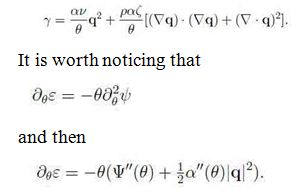
![]() is the specific heat, we guarantee the condition
is the specific heat, we guarantee the condition ![]() by letting
by letting ![]()
![]() be the set of variables and assume
be the set of variables and assume ![]() Hence eq. (6) reads
Hence eq. (6) reads
![]() then the arbitrariness of implies again the classical relation
then the arbitrariness of implies again the classical relation![]()
![]()
![]()
![]()
![]()
![]()
![]()
![]()
![]()
![]() Equation (12) becomes
Equation (12) becomes![]()
![]() results in
results in![]()
![]() and heat conductivity
and heat conductivity ![]()
![]() in a non-linear form.
in a non-linear form.![]()
![]() is the second-order tensor with components
is the second-order tensor with components ![]() . Hence eq. (11) can be written in the form
. Hence eq. (11) can be written in the form![]()
![]()

![]() be constants then
be constants then ![]() results in the addition of a term proportional to
results in the addition of a term proportional to ![]() but also a term
but also a term ![]() in the expression of q˙ . This shows the qualitative role of u in the formulation of constitutive equations. As an aside, observe that the flux
in the expression of q˙ . This shows the qualitative role of u in the formulation of constitutive equations. As an aside, observe that the flux ![]() is given in [15]; here the whole value of k is established by (9) subject to the constancy of
is given in [15]; here the whole value of k is established by (9) subject to the constancy of ![]()
![]() constant along with the requirements (9)).
constant along with the requirements (9)).







